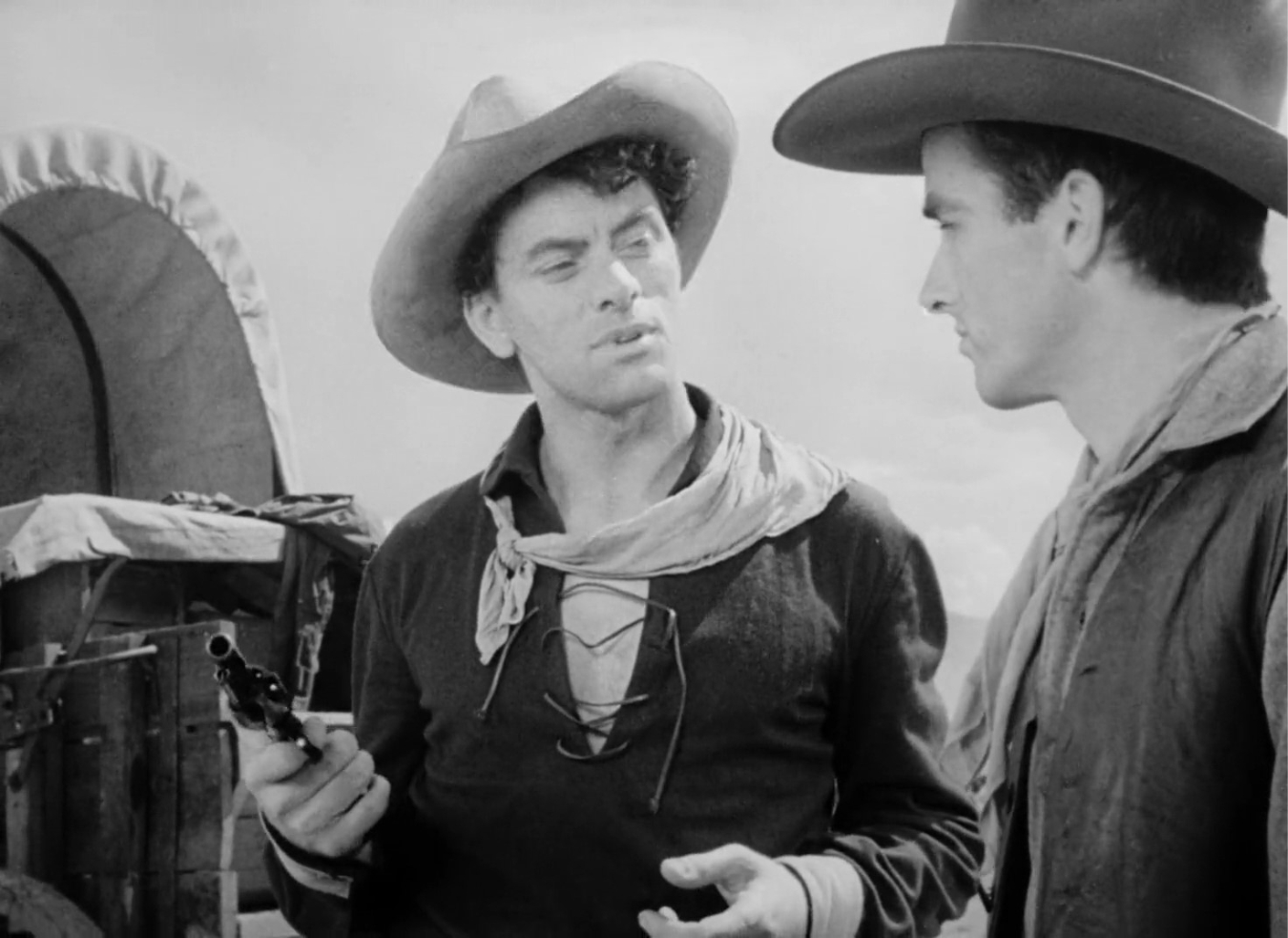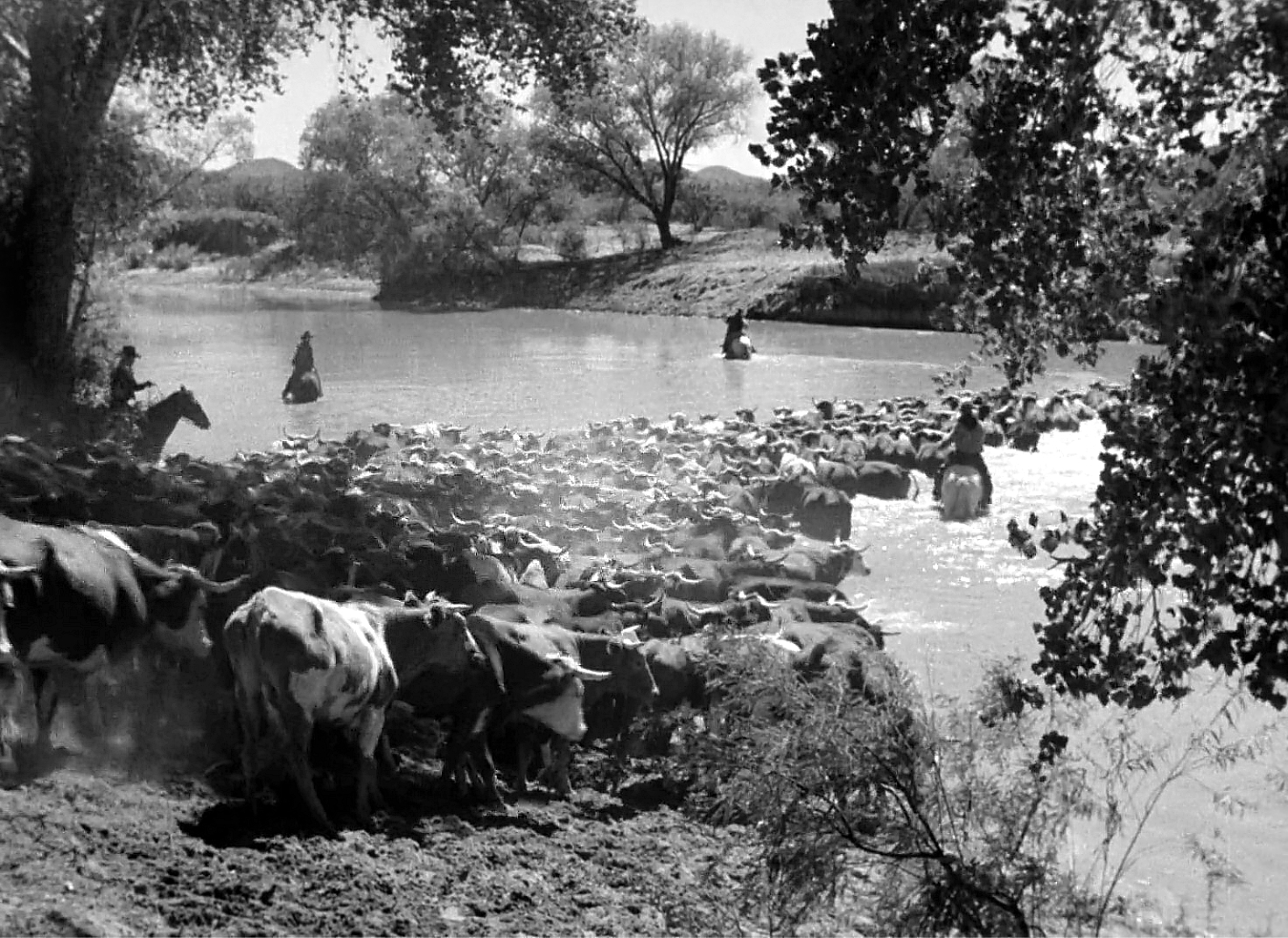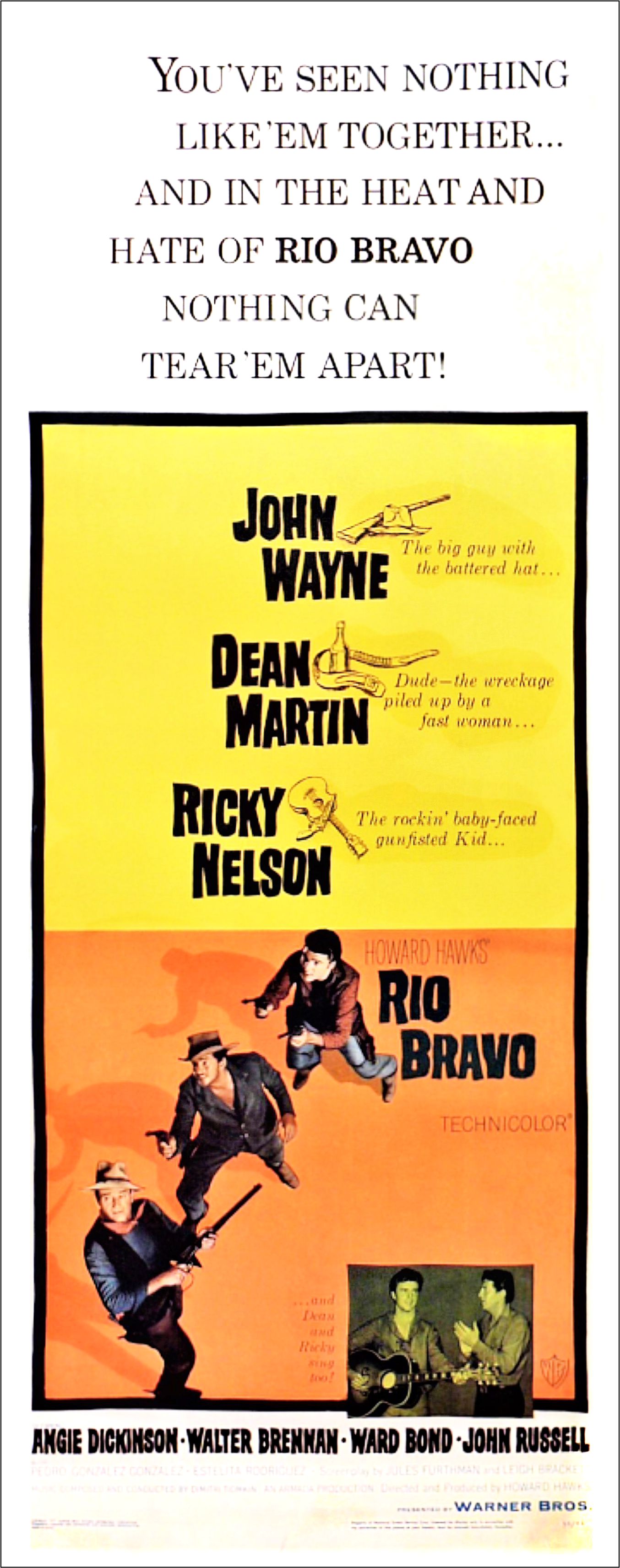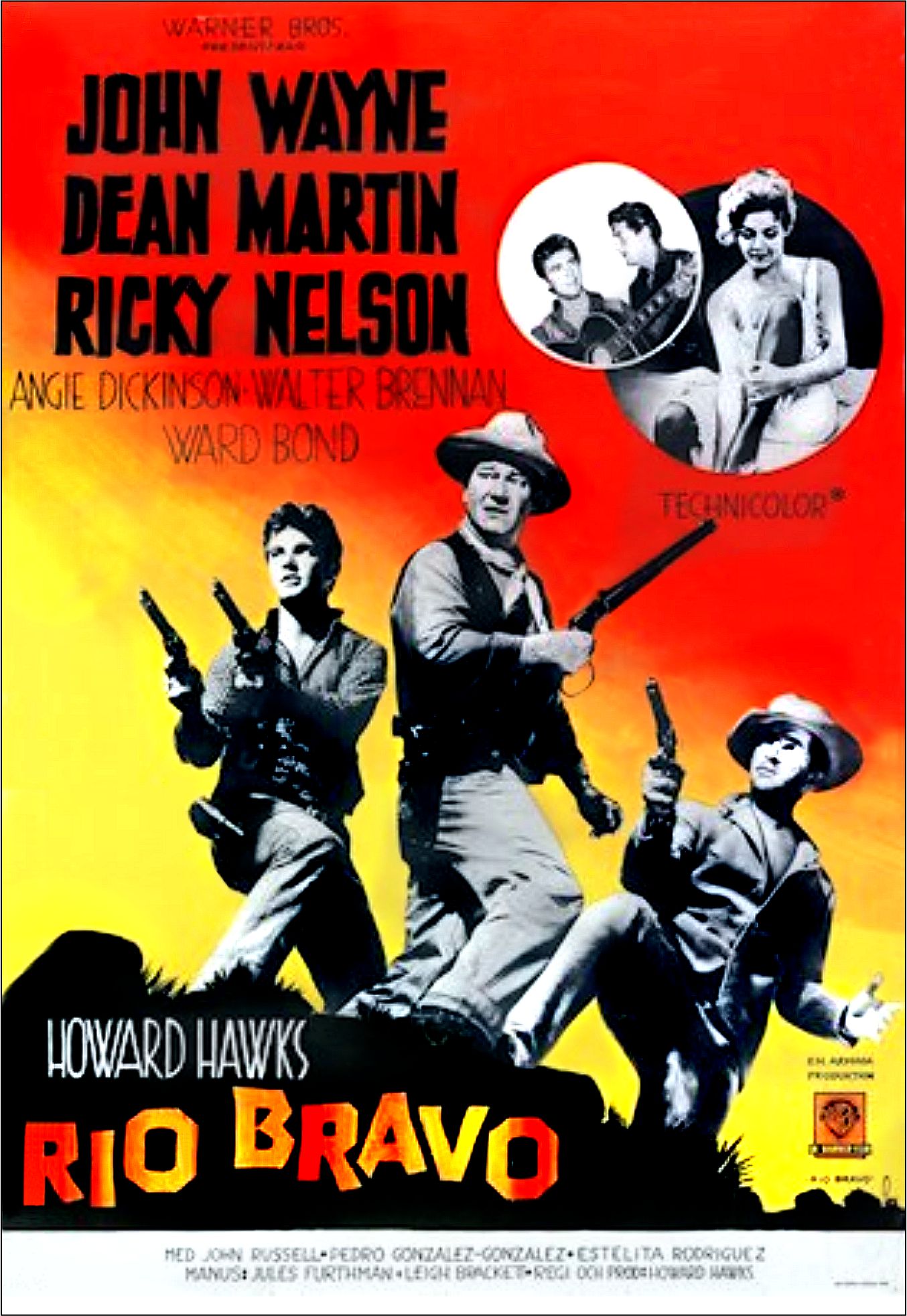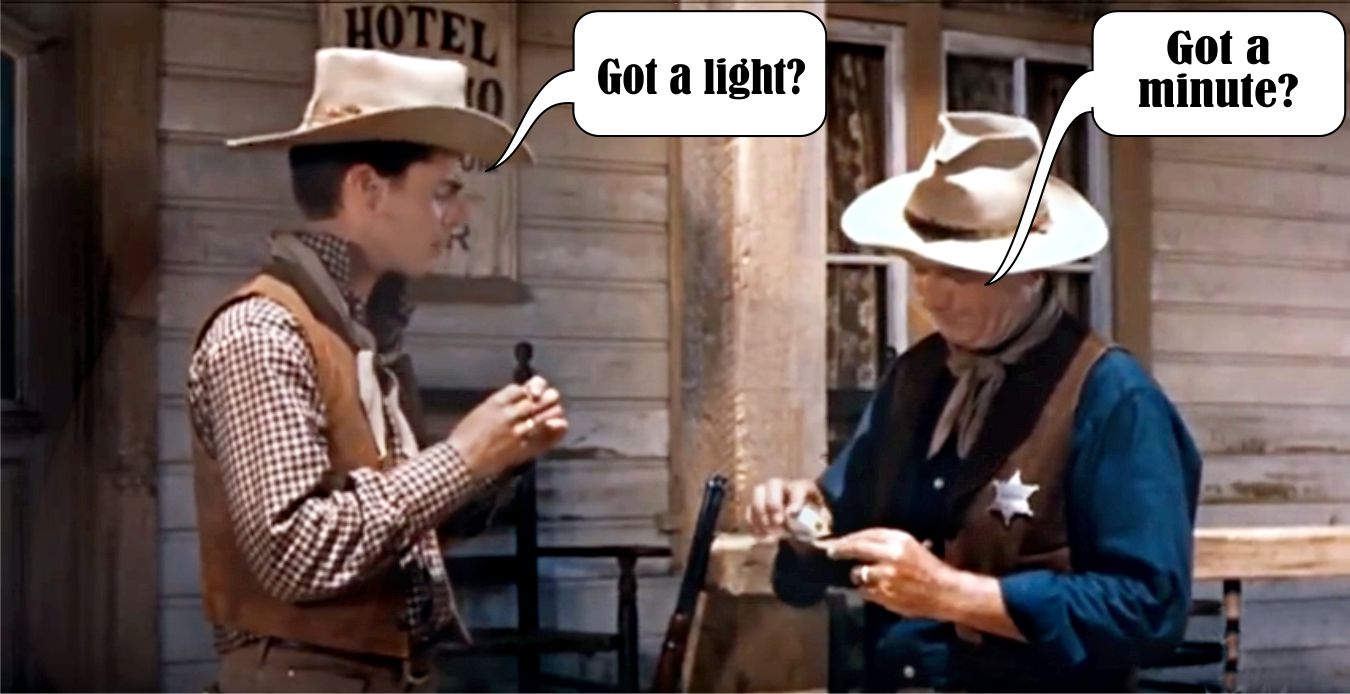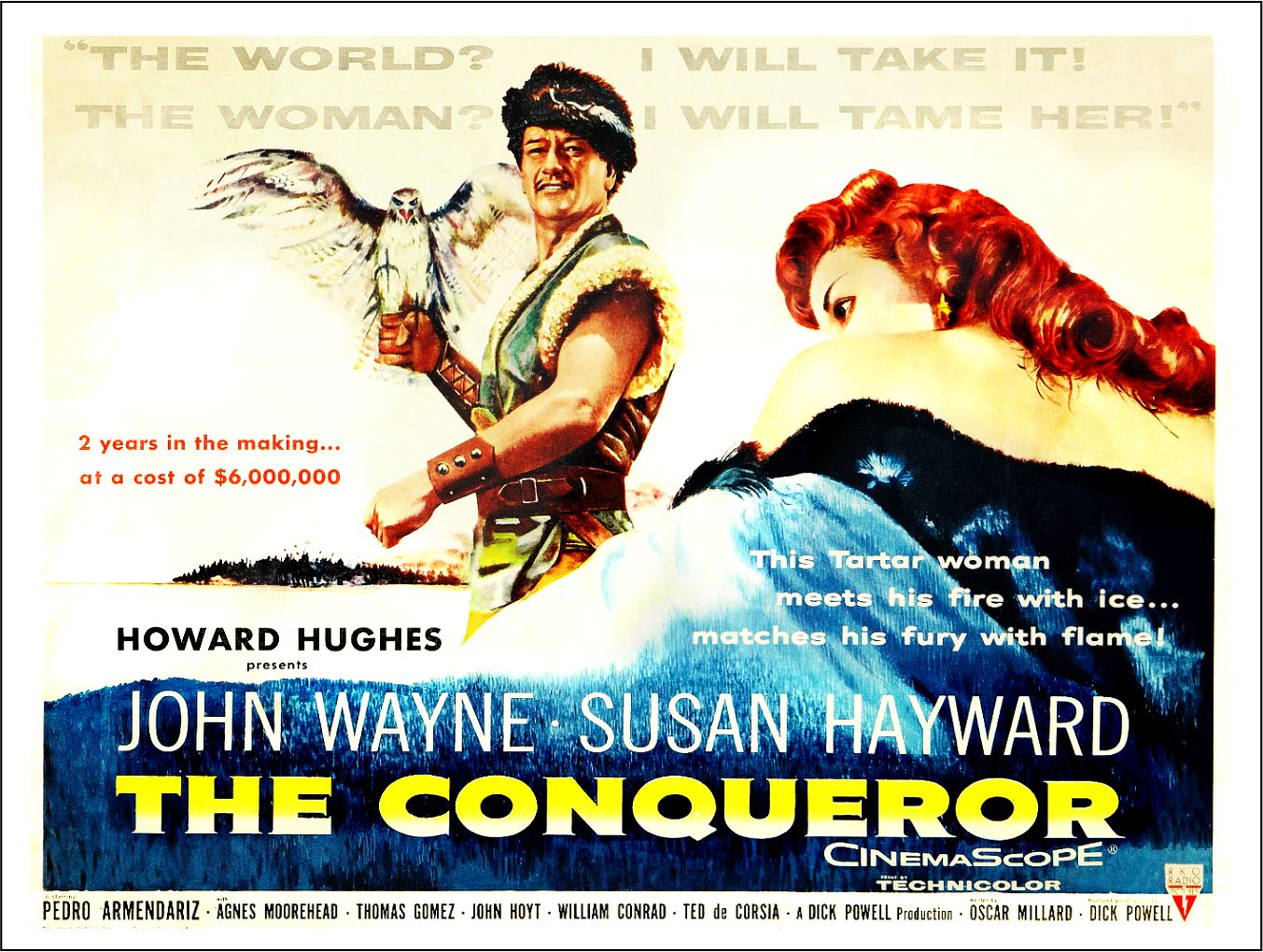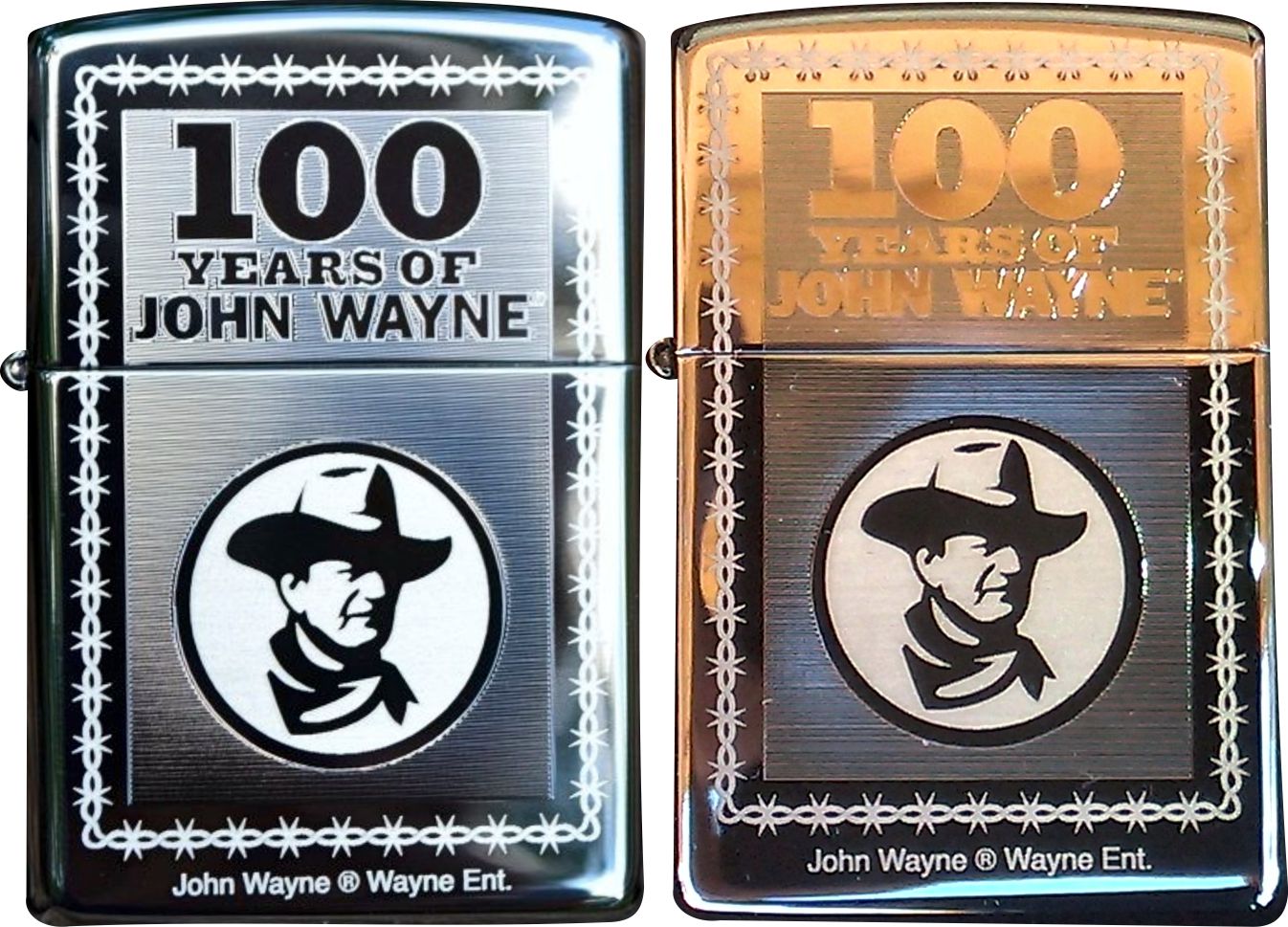

Well … my computer finally blew up.
I rode it as far as I could … poor gal.
But it couldn’t take anymore and it was beyond redemption.
For quite a while I had been resorting to ‘computer gymnastics’ to get anything done.
So … today I went out and bought a new motherboard and graphics card.
$900.
That’s a big chunk for me – a part-time Greeter at Home Depot.
Rose’s son will assemble all this shortly and we’ll drop in Windows 10.
Hopefully I can get something out right away.
In all this time only one person baled on me.
Can’t blame ’em if nothing is happening?

So thanks for sticking around.
Here’s something interesting to read while you’re waiting:


September 14, 2009
Was The Movie The Conqueror Really Cursed? A Look At Radiation Paranoia
https://www.gasdetection.com/interscan-in-the-news/magazine-articles/movie-conqueror-really-cursed-look-radiation-paranoia/
Few environmental myths have stood the test of time better than the notion that a significant number of the cast and crew of The Conqueror (1956) were felled by cancer, contracted as a result of exposure to radioactive fallout.
Certainly, all the elements of a good story are there. Several above ground atomic tests were run at Yucca Flats in Nevada from 1951–1953, including 11 in 1953 under the name “Operation Upshot-Knothole.” The movie was shot from May-August of 1954 in Snow Canyon State Park, located 11 miles (18 km) northwest of St. George, Utah. As luck would have it, Snow Canyon is 137 miles (220 km) downwind of Yucca Flats. To make matters worse, uncredited producer Howard Hughes shipped truckloads of dirt from the site back to the studio for reshoots.
The movie premiered on February 22, 1956 in Los Angeles, and less than seven years later, director Dick Powell died of cancer. After Powell, several of the leading actors succumbed to cancer, as well. There was Pedro Armendáriz, who killed himself in June of 1963, rather than live with his terminal diagnosis. Agnes Moorehead was the next star of the film to die of cancer, in April of 1974. She was followed by Susan Hayward (March, 1975) and John Wayne, who first contracted lung cancer in September of 1964 and finally died of stomach cancer on June 11, 1979.
Public interest was piqued by an article in the November 10, 1980 issue of People magazine, in which it was stated that “Of The Conqueror’s 220 cast and crew members from Hollywood, an astonishing 91 have contracted cancer.”
The article quoted Dr. Robert C. Pendleton, director of radiological health at the University of Utah: “With these numbers, this case could qualify as an epidemic. The connection between fallout radiation and cancer in individual cases has been practically impossible to prove conclusively. But in a group this size you’d expect only 30-some cancers to develop. With 91, I think the tie-in to their exposure on the set of The Conqueror would hold up even in a court of law.”
This sounds impressive until you do some basic research. According to the National Cancer Institute, at the time the article was written, the overall incidence of being diagnosed with cancer in a person’s lifetime (age-adjusted) was about 40%. As it happens, this number still holds today. Thus, in a cohort of 220 people, 88 would be diagnosed with cancer at some point.
I have no idea how Pendleton came up with his “30-some.” If anything, given the heavy smoking habits of many in the movie business at the time, including Dick Powell, Agnes Moorehead, Pedro Armendáriz, Susan Hayward, and John Wayne at five packs a day, 91 is completely within the expected range. The only “astonishing” thing is that the People article did not mention the smoking habits of any of the deceased stars.
Bruce Church is a health physicist based in southern Utah, who had been involved with the testing program for years, and has done his level best to act as the voice of reason on the issue. Church told me about plaintiff’s attorneys going door to door, trolling for clients in the St. George area in the late 1970s, paving the way for a series of ultimately unsuccessful lawsuits, filed on behalf of the so-called “downwinders.” He likes to remind those interested in these matters that since 1950, Utah has had one of the lowest cancer mortality rates in the country. Moreover, Washington County—supposedly ground zero for the fallout—has one of the lowest cancer mortality rates in the state.
Much was made of an article entitled “Childhood leukemias associated with fallout from nuclear testing,” which appeared in the February 22, 1979 issue of the New England Journal of Medicine. The study spoke of a 2.44 times increase in mortality between the high-exposure and low-exposure cohorts, within the high fallout counties examined. Again, this sounds impressive as long as you ignore the fact that even with this increase, the mortality rate was just slightly above the rate for the entire United States.
As you might expect, this significant qualification is infamously not cited in the dozens of web-based references to the study. And, given that the research effort set out to examine “high fallout” counties to begin with, it is quite suspicious that this group had to be parsed into low and high cohorts, which would only serve to magnify the effects observed. Further studies would continue to bear out negative or de minimis findings.
However, as regular readers of this column are aware, all the science in the world cannot trump emotionalism and politics. Thus, the Radiation Exposure Compensation Act (RECA)—passed in 1990—provides for money (typically $50,000) to be paid to victims of certain cancers, who simply have to prove that they lived in a list of counties during a particular time period.
RECA has paid out over $1 billion so far, and has produced bountiful results for many Utah-based politicians. Following the old adage that a cynic is someone who knows the price of everything but the value of nothing, this bounty paid on cancer has simply reinvigorated all the mythology: If victims are being compensated, the story must be true!
Yet, science has garnered some victories. Bruce Church was one of the prime movers in setting up the Community Environmental Monitoring Program (CEMP) started in 1981, and now boasting 29 stations that ring the test site area. Data is made available to any interested party, and the monitoring stations are often managed by local high school science teachers.
One such station manager, Jack Heppler, was successful in convincing at least two movie production companies that there was no danger whatever in filming in the St. George area. Heppler also worked his magic on calming the locals as well as easing the minds of families interested in moving to the region.
Church recommends the Smithsonian affiliated Atomic Testing Museum in Las Vegas, as well as the online Atomic Archive as excellent resources. I would add Church’s site to this list.
As to The Conquerer, the only real curse was its script and the miscasting of John Wayne in the lead.

Is there anything that Howard Hughes touched that didn’t achieve extraordinary dimensions???
Either great or bad?

Moving ahead …
Like this:
Like Loading...































 Stewart is second …
Stewart is second … … and both are still Billed before the Film Banner:
… and both are still Billed before the Film Banner:






























 Leaving Fen behind.
Leaving Fen behind.







